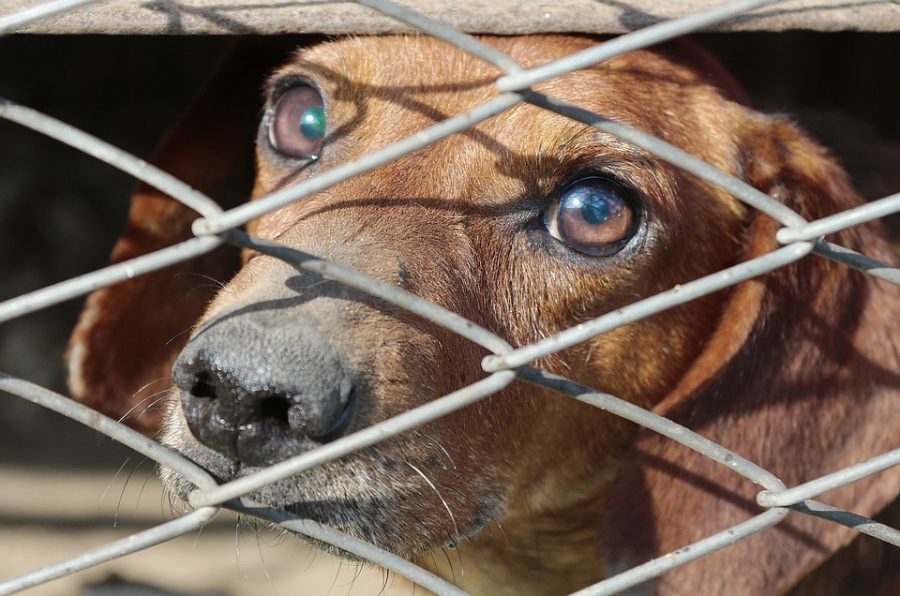Puppy Mills: Why Are They Problematic?
April 13, 2020
On March 7th, 2019, Craig Gray was found operating a puppy mill with over 700 dogs in conditions the police described as “out of control and inhumane.” He was later arrested and faced charges of animal cruelty and obstruction. He ran a licensed pet-breeding business called Georgia Homes. The business sold miniature dog breeds for up to $600 per dog. “Releash Atlanta,” an organization that cared for some of the dogs held in Gray’s mill before his arrest, said that the dogs weren’t used to the outdoors and slept standing up due to the terrible conditions they lived in. The Atlanta Humane Society stated in a Facebook post that these dogs have lived their whole lives cramped in tiny cages, one on top of the other. These horrid conditions were detailed in said post, in which the Human society wrote, “They’re matted, covered in feces and have never been held or walked.” Gray was even mentioned on the Humane Society’s “Horrible Hundred 2018” list of ‘problem puppy mills and puppy sellers in the United States.’
Situations like these are currently happening all over America, right in our backyards. According to the Humane Society of the United States, Pennsylvania is one of the states with the most puppy mills in the country – currently having about twelve known operations. One Pennsylvania breeder made about $300,000 through a puppy mill. “It’s all about the money,” says Cari Meyers, a staff member of the Puppy Mill Project, a non-profit organization advocating against puppy mills.
A puppy mill is a commercial dog-breeding facility that focuses on increasing profit rather than the general health and welfare of the animals it houses. Dogs are constantly being bred and sold inhumanely in order for their owners’ to make money. Throughout America, there are around ten thousand of these mills, while less than three thousand of them are actually certified by the United States Department of Agriculture (USDA). In most states, these mills are legal. According to the Puppy Mill Project, an estimated two million dogs are sold from shelters each year, while over one million dogs are euthanized in shelters every year simply because they are unwanted. “Dogs are just a money-making thing to the people in charge of it (the puppy mill),” states Mary Woodward, a WFS faculty member, and experienced dog trainer.
Animal cruelty is the most important reason why puppy mills are such a problem. In most states, these facilities can keep up to hundreds of dogs in cages for their whole lives, as long as they are given the necessities of food, water, and shelter. USDA regulations state that their cages only have to be six inches taller than both the height and length of the dog, giving them very little space. As a result of all this, these dogs develop diseases, fears, phobias, mental problems, and compulsive behaviors. These dogs are also usually found with bleeding paws, tooth decays, ear infections, lesions on their eyes (which can cause blindness), and other dangerous health conditions. All of these factors make death in these mills far too common. According to the Puppy Mill Project, about three million dogs are killed in shelters every year, simply due to a lack of space. “There’s nothing about the love given to these dogs,” says Cari Meyers.
The United States Department of Agriculture (USDA) is the agency responsible for supervising the puppy mill industry under the Animal Welfare Act. The Animal Welfare Act regulates the minimal standards of care and treatment provided for animals in puppy mills. In a puppy mill licensed by the USDA, human interaction is not required, adequate socialization and exercise can be denied, owners can decide what treatment is considered “sufficient,” unwanted animals can be killed off, and so much more. Even though they are required to do so, the USDA doesn’t enforce the Animal Welfare Act during inspections. This means that breeders can stay in business even if they are breaking the law. Clearly, the USDA regulations are not adequate regardless, as they seem to deny domesticated dogs of the typical comforts they require for survival.
There are thousands of dogs kept in puppy mills that urgently need our help now. While not much is being done to address the problem of abusive puppy mills, there are many ways to do so. For instance, adopting a dog from an animal shelter instead of a pet store is a great way to stop puppy mills. According to Paws, about 90% of puppies in pet stores come from these shelters. If you don’t buy a puppy from these stores, these owners would lose profit and eventually would go out of business. Speaking against puppy mills is another method to spread awareness about this topic in dire need of reform. Reporting incidents pertaining to puppy mills can also help. At the crux of the issue is awareness, as people will only know there is a problem if they hear the horrifying accounts of the treatment of animals in puppy mills. These are only some of the many methods that can help solve this problem.
What will puppy mills be like in twenty-five years? Will USDA regulations change, and give animals better treatment and the respect they deserve? Will these mills be more or less popular than they are now? Will puppy mills even exist by then? Puppy mills have been popular since they originated following World War II in the mid-1960s. We don’t know if this will be the case in twenty-five years. There are many possibilities as to what the future of puppy mills may hold. According to the Puppy Mill Project, “With stronger laws and more awareness, they will eventually shut down.”































